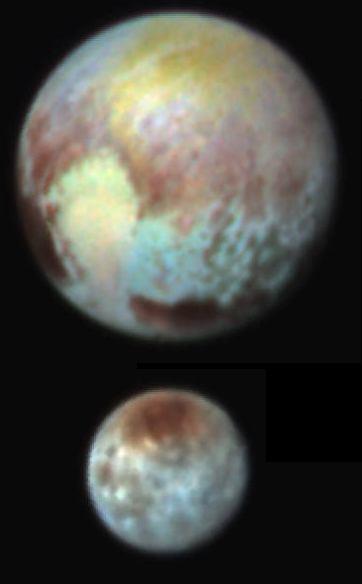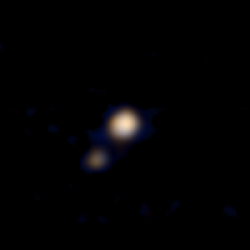Carbon dioxide and hydrogen peroxide found on the surface of Pluto’s moon Charon
Using spectroscopic data from the Webb Space Telescope, scientists have detected both carbon dioxide and hydrogen peroxide on the surface of Pluto’s moon Charon, adding these chemicals to the previously detected water ice and ammonia-bearing chemicals that give the planet its gray and red colors.
The team compared the spectroscopic observations with laboratory measurements and detailed spectral models of the surface, concluding that carbon dioxide is present primarily as a surface veneer on a water ice-rich subsurface. “Our preferred interpretation is that the upper layer of carbon dioxide originates from the interior and has been exposed to the surface through cratering events. Carbon dioxide is known to be present in regions of the protoplanetary disk from which the Pluto system formed,” Protopapa said.
The presence of hydrogen peroxide on the surface of Charon clearly indicates that the water ice-rich surface is altered by solar ultraviolet light and energetic particles from the solar wind and galactic cosmic rays. Hydrogen peroxide forms from oxygen and hydrogen atoms originating from the breakup of water ice due to incoming ions, electrons or photons.
The theory proposing the dry ice comes from the interior is interesting, but there simply is not enough data to take it very seriously at this point.
Using spectroscopic data from the Webb Space Telescope, scientists have detected both carbon dioxide and hydrogen peroxide on the surface of Pluto’s moon Charon, adding these chemicals to the previously detected water ice and ammonia-bearing chemicals that give the planet its gray and red colors.
The team compared the spectroscopic observations with laboratory measurements and detailed spectral models of the surface, concluding that carbon dioxide is present primarily as a surface veneer on a water ice-rich subsurface. “Our preferred interpretation is that the upper layer of carbon dioxide originates from the interior and has been exposed to the surface through cratering events. Carbon dioxide is known to be present in regions of the protoplanetary disk from which the Pluto system formed,” Protopapa said.
The presence of hydrogen peroxide on the surface of Charon clearly indicates that the water ice-rich surface is altered by solar ultraviolet light and energetic particles from the solar wind and galactic cosmic rays. Hydrogen peroxide forms from oxygen and hydrogen atoms originating from the breakup of water ice due to incoming ions, electrons or photons.
The theory proposing the dry ice comes from the interior is interesting, but there simply is not enough data to take it very seriously at this point.












